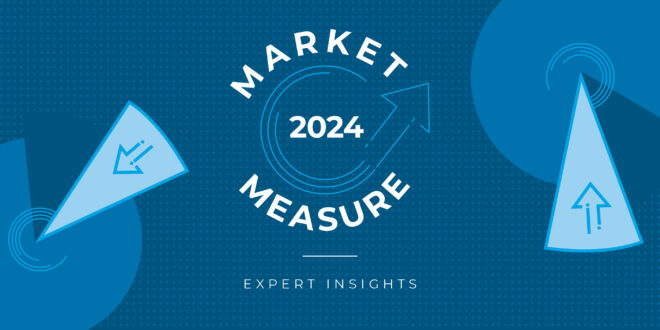
Danushka Nanayakkara-Skillington is the assistant vice president for forecasting and analysis at the National Association of Home Builders (NAHB). She oversees the activities of the forecasting and analysis section of the economics group which includes housing market analysis, industry surveys, developing and maintaining national, regional, long-term and remodeling expenditures forecasts. Prior to joining NAHB, Nanayakkara-Skillington worked at J.D. Power as a senior economic analyst in the automotive industry. She holds a bachelor of arts in economics and business administration from Otterbein University and a master’s in applied economics from Johns Hopkins University.
Nanayakkara-Skillington offers her insights here into the economic conditions of 2023 and the impact on housing and home building. She also offers analysis on what to expect in 2024.
What key trends did you see in 2023 in the housing market? Will they continue in 2024?
The Federal Reserve’s aggressive rate hikes have significantly weakened the housing market. With rising interest rates negatively affecting both homebuyers and builders, the direction of the housing market in upcoming months will largely depend on the movement of mortgage rates. Due to these headwinds, the housing market has showed a divergence. Single-family construction is moving off cycle lows, while multifamily development is slowing after an unexpectedly strong run.
The positive impact of low resale inventory and strong housing demand have been driving single-family production in recent months. However, builder confidence is in negative territory due to rising mortgage rates, elevated construction costs, and limited lot availability. A gain for single-family home building on a calendar year basis will have to wait until 2024.
We anticipate that multifamily starts will decline during the second half of 2024 due to tight financing conditions and high number of apartments currently under construction. But in the meanwhile, the elevated completion of multifamily units will likely mitigate shelter inflation pressure and help determine monetary policy in the months ahead.
On the other hand, the remodeling market remains a bright spot in the housing sector. Despite higher borrowing costs and prices, the demand for remodeling is holding up due to low existing inventory, aging housing stock and changes in housing and lifestyle decisions during the pandemic period. We expect the remodeling market will remain solid in 2024 compared to the other two housing segments.
How has inflation affected the market and how will it continue to affect the market?
There is good news on cooling inflation even though shelter inflation continues to be a drag on the overall inflation reading. The broadest measure of consumer inflation, the CPI, recorded a 3.2% year-over-year gain in October, after 3.7% in September. The Fed’s targeted inflation measure, Core PCE inflation, remains near 4% and has a policy target of 2%. Shelter inflation is now cooling, declining to a 6.7% year-over-year gain, but was once again the leading source of inflation in October.
How has affordability changed this year?
Since the start of 2023, the benchmark 10-year Treasury rate (which generally moves in tandem with mortgage rates) has increased from 3.8% to nearly 4.4% by mid November. In October, the 10-year Treasury rate was at 4.9%. The average 30-year fixed mortgage interest rate increased even more, rising from 6.48% at the start of the year to 7.44%, the highest levels seen in 20 years. Combined with higher construction costs and rising home prices, these market dynamics have pushed housing affordability to lows not seen in more than a decade. According to the NAHB/Wells Fargo Housing Opportunity Index, just 37.4% of new and existing homes sold during the third quarter of this year were affordable to median-income households—the lowest reading in more than a decade. A recent NAHB study shows that every quarter-point hike in mortgage rates would price out 1.1 million households.
What are some short and long-term impacts of affordability?
As rising interest rates coupled with ongoing labor shortages and high inflation continue to drive up housing costs, builder confidence in the market for newly built single-family homes posted its fourth straight monthly decline in November, dropping six points to 34, according to the NAHB/Wells Fargo Housing Market Index.
The sentiment levels have declined 22 points since July 2023 and are at their lowest level since December 2022. Higher home costs and elevated mortgage rates are pricing buyers out of the market, especially entry-level and first-time buyers. The best way to ease growing affordability challenges is for policymakers to address ongoing supply chain disruptions to help builders bring down construction costs and increase production to meet market demand. But the primary challenge for housing and the economy is higher interest rates and that will continue to be true until mid-late 2024.
How have housing trends impacted the home improvement industry this year?
The NAHB/Westlake Royal Remodeling Market Index for the third quarter of 2023 softened but remains positive with a reading of 65. While there is still demand for remodeling, some customers are pulling back on potential projects due to higher prices and increased interest rates. Even though remodeling spending has experienced some slow down over the past year, it accounts for 43% of total residential construction as of June 2023, up from 31% at the beginning of 2002. NAHB forecasts that the remodeling market will experience mild growth in 2024 and 2025.
What are home builders forecasting for 2024?
We expect single-family home building in 2024 to rebound as the interest rates normalize. Though multifamily starts remained strong this year due to low vacancies and solid demand for rental housing, we forecast multifamily construction will decline in 2024 due to tighter commercial financing and a record-high number of multifamily units under construction.
Despite medium-term macroeconomic headwinds, there remains a housing deficit in the U.S. This means as the economy exits this period of higher inflation and tight monetary policy in the coming quarters, it will be the housing and home building sector that will recover and expand first. An aging housing stock will also support demand for remodeling activity, and as mortgage interest rates normalize, the demand for single-family housing will remain solid due to demographic tailwinds.
 Hardware Retailing The Industry's Source for Insights and Information
Hardware Retailing The Industry's Source for Insights and Information






